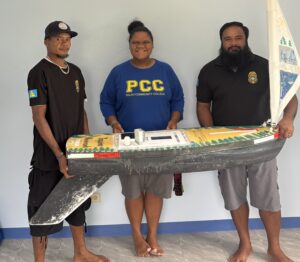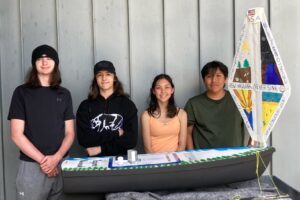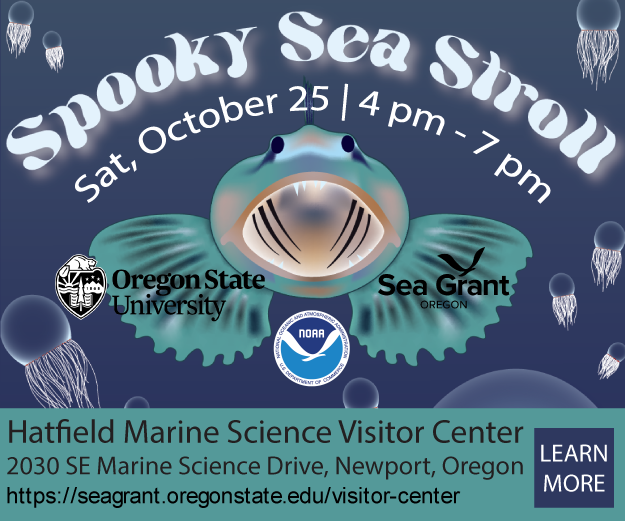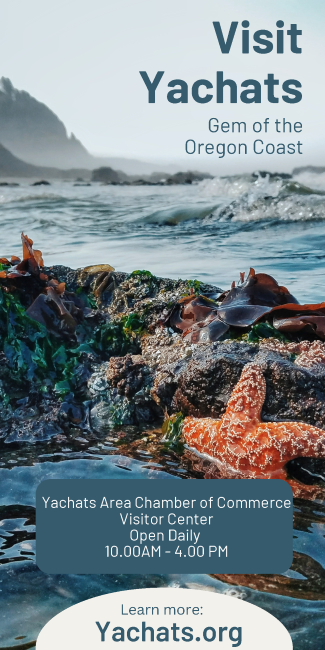
By DANA TIMS/Lincoln Chronicle
The Lincoln County high school students who spent weeks last summer building an autonomous mini-boat to launch into the Pacific Ocean knew just what they were doing when they dubbed the craft the RSV Yaquina Neversink.
The five-foot-long boat lived up to its unsinkable name this week, surviving storms, waves and wind to wash up on the northern Palau island of Kayangel — more than 6,300 miles and 239 days after its Sept. 21 launch from a research vessel off the Oregon coast.

“This is pretty incredible,” Kama Almasi, who oversees the summer learning program that assembled the mini-boat, told the Lincoln Chronicle on Tuesday. “Due to time differences and communications challenges, there’s still a lot we don’t know. But the Neversink has been located and we’re all pretty excited to see what happens next.”
Almasi, director of Oregon State University’s Hatfield Marine Science Center STEM Hub, learned of the discovery through an email she received early Monday.
“This is Kayla from Kayangel,” read the email. It was sent by Kayla Remoket, an extension agent at Palau Community College. “Please advise on what shall be done now.”
Almasi and others are hurriedly trying to figure out what that entails.

Ideally, she will contact someone at the college who can then tap students there to undertake any necessary repairs. It’s very possible, Almasi said, that the vessel’s fiberglass hull, sail or mast may have been damaged during its journey down the West Coast to the Baja peninsula, back up toward Hawaii, north again and, finally, west to its landing point on what is, fortuitously, the only inhabited islet of the Palau’s Kayangel Atoll.
The boat’s progress has been followed for months by both the students who built it and thousands of others online. Its GPS transmitter has recorded, in real time, its entire journey.
The Neversink’s kit and additional sensor package cost about $7,500 and was purchased from Educational Passages, a non-profit based in Northwood, N.H. The boat is one of 25 launched by high school students across the country last summer and joins 211 other boats that have been launched since 2008.
The continuous stream of data produced by that veritable fleet of mini-boats is relied upon regularly by ocean researchers monitoring water and air temperatures and seeking to better understand wave patterns, said Cassie Stymiest, the organization’s executive director.
“We always remind people that this isn’t just a cool little after-school project,” she said in an interview shortly after the craft was launched. “It’s a really intensive learning experience that has touched hundreds and hundreds of students over the years.”

Instrumental in developing and building the Neversink were Tracy Crews, who serves as Oregon Sea Grant’s associate director of education and Rick Peters, a retired robotics engineering instructor who served as the project’s boat building mentor. Both live in Yachats.
For now, Almasi is still busy contacting people in Palau to check on the boat’s condition and hoping to get the craft into the hands of students on the island.
“For so long, I never thought we’d see it again,” said Almasi, who hasn’t entirely ruled out buying her own airplane ticket to retrieve the boat sometime this summer. “I’ve asked for photographs so we can determine exactly what shape the Neversink is in. We’ll know a whole lot more from there.”
- Dana Tims is an Oregon freelance writer who contributes regularly to Lincoln Chronicle and can be reached at DanaTims24@gmail.com





















Great job students, definitely something to be proud of!
What an incredible learning and life experience for everyone involved. This sort of experience can launch a lifetime of being excited about living!
These are tomorrow’s leaders. Very proud of them all. And thanks to their mentors and instructors and all those who had a part in this venture.
Good job, everyone!
That is amazing. What an achievement. Congrats on your success.
Cheers and congrats to all involved!